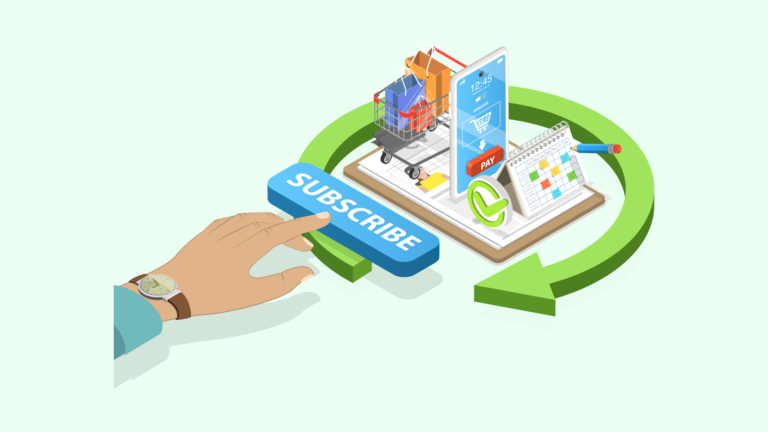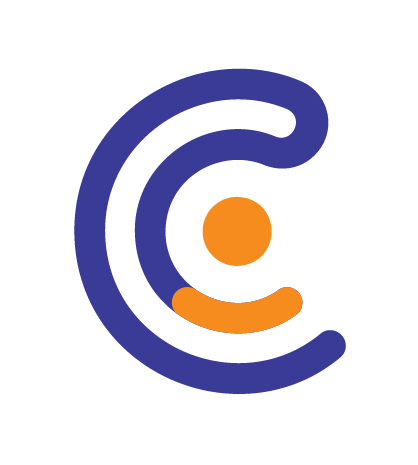Customer Success (CS) is more than just providing support—it’s about ensuring customers achieve their desired outcomes with your product or service. In today’s competitive landscape, businesses that prioritize metrics for Customer Success see higher retention rates, increased revenue, and stronger customer relationships. But how do you measure success?
Tracking the right Customer Success metrics helps businesses understand engagement, satisfaction, and long-term value. From churn rate and Net Promoter Score (NPS) to Customer Lifetime Value (CLV), these key indicators drive strategic decisions. By monitoring and optimizing these metrics, companies can reduce churn, enhance product adoption, and foster long-term loyalty. According to Harvard Business Review, 5% increase in customer retention can boost profits by 25% to 95%.
Let’s explore the most important Customer Success KPIs that every business should track for sustainable growth.
Understanding Customer Success Metrics
Customer Success Metrics are key performance indicators (KPIs) that measure how effectively a business helps customers achieve their goals. These metrics provide insights into customer engagement, retention, and overall satisfaction, ensuring that businesses can take proactive steps to improve the customer experience.
Tracking these metrics helps companies:
- Monitor customer engagement – Understand how users interact with your product.
- Reduce churn – Identify at-risk customers and take action to retain them.
- Improve satisfaction – Gather feedback and enhance service quality.
- Drive revenue growth – Optimize upselling, cross-selling, and renewals.
By analyzing data-driven customer success KPIs, businesses can make informed decisions that strengthen relationships and enhance long-term value.
Key Customer Success Metrics
1. Customer Retention Rate (CRR)
Customer Retention Rate (CRR) is a key metric that measures the percentage of customers a business retains over a given period. A high CRR indicates strong customer loyalty and satisfaction, while a low CRR may signal potential issues with product experience or support.
Formula to Calculate CRR:

Where:
- E = Customers at the end of the period
- N = New customers acquired
- S = Customers at the start of the period
How to Improve CRR:
- Enhance onboarding to help users realize value faster.
- Provide proactive customer support to address concerns before they escalate.
- Engage with customers regularly through personalized communication.
- Offer loyalty programs or incentives for renewals.
CRR is a vital indicator of long-term business growth and sustainability, making it essential for companies to track and optimize this metric consistently.
2. Customer Churn Rate
Customer Churn Rate represents the percentage of customers who stop using a product or service within a specific timeframe. A high churn rate can negatively impact revenue, profitability, and growth.
Formula to Calculate Churn Rate:

Where:
- C = Customers lost during the period
- S = Customers at the start of the period
How to Reduce Churn:
- Identify at-risk customers early by tracking engagement and support interactions.
- Improve customer onboarding to ensure they see immediate value.
- Regularly collect feedback to address concerns and enhance user experience.
- Offer exclusive benefits to retain high-value customers.
By minimizing churn, businesses can maintain stable revenue, improve brand reputation, and create lasting customer relationships.
3. Net Promoter Score (NPS)
Net Promoter Score (NPS) is a widely used metric that measures customer loyalty and satisfaction. It is based on a simple question:
“How likely are you to recommend our product/service to a friend or colleague?”
Customers respond on a scale of 0 to 10, categorized as:
- Promoters (9-10): Highly satisfied customers who advocate for your brand.
- Passives (7-8): Neutral customers who may or may not recommend your product.
- Detractors (0-6): Dissatisfied customers who may churn or leave negative reviews.
Formula to Calculate NPS:
NPS= % Promoters −% Detractors
How to Improve NPS:
- Act on customer feedback to address concerns raised by detractors.
- Engage with promoters to leverage their positive experiences in testimonials and referrals.
- Enhance customer support and engagement to turn passives into promoters.
NPS is a powerful indicator of customer sentiment and long-term business success, helping companies refine their strategies for customer satisfaction and loyalty.
4. Customer Lifetime Value (CLV)
Customer Lifetime Value (CLV) measures the total revenue a business can expect from a single customer throughout their relationship with the company. A high CLV indicates strong customer retention, loyalty, and repeat purchases.
Formula to Calculate CLV:
CLV= Average Purchase Value × Purchase Frequency × Customer Lifespan
Why CLV Matters:
- It helps businesses allocate budgets efficiently for customer acquisition and retention.
- Higher CLV means better profitability and long-term growth.
- Businesses can identify high-value customers and tailor marketing strategies accordingly.
Strategies to Enhance CLV:
- Deliver exceptional customer service to increase repeat purchases.
- Personalize marketing campaigns to boost engagement.
- Introduce loyalty programs that encourage long-term commitment.
- Upsell and cross-sell to increase purchase value.
Tracking CLV enables businesses to optimize their customer success strategy and maximize revenue potential.
5. Customer Satisfaction Score (CSAT)
Customer Satisfaction Score (CSAT) measures how satisfied customers are with a product, service, or interaction. It is typically gathered through surveys asking customers to rate their experience on a scale (e.g., 1-5 or 1-10).
Formula to Calculate CSAT:

Why CSAT Matters:
- It provides immediate insights into customer happiness.
- Helps businesses identify areas that need improvement.
- Correlates directly with customer retention and brand loyalty.
Best Practices for Improving CSAT:
- Simplify customer interactions to reduce friction.
- Offer proactive support to resolve issues quickly.
- Analyze CSAT feedback and implement necessary changes.
- Follow up with dissatisfied customers to understand their concerns.
CSAT is a crucial metric for businesses that want to enhance customer experience and satisfaction.
6. Time to Value (TTV)
Time to Value (TTV) refers to the time it takes for a customer to realize the expected value from a product or service. The shorter the TTV, the better the customer experience and retention.
Why TTV is Important:
- Faster TTV leads to higher customer satisfaction.
- Reduces churn by helping users see the benefits quickly.
- Strengthens customer trust and long-term engagement.
How to Reduce TTV:
- Streamline onboarding with clear product tutorials and guides.
- Provide hands-on customer support to resolve issues quickly.
- Automate key processes to simplify setup and implementation.
- Set clear expectations on product value from the beginning.
Businesses that optimize TTV can significantly improve user engagement, retention, and overall customer success.
7. Expansion Revenue (Upsell & Cross-sell Rate)
Expansion revenue refers to additional income generated from existing customers through upselling (encouraging customers to upgrade or purchase premium versions) and cross-selling (selling related products or services). It is a key metric in measuring customer success and revenue growth.
Formula to Calculate Expansion Revenue Rate:

Why Expansion Revenue Matters:
- Increases customer lifetime value (CLV) without acquiring new customers.
- Strengthens customer relationships by offering solutions that match their needs.
- Indicates product effectiveness and satisfaction levels.
Best Practices to Boost Expansion Revenue:
- Segment customers based on needs to target relevant upsell and cross-sell offers.
- Use data-driven insights to recommend upgrades at the right time.
- Offer free trials or discounts on premium features.
- Educate customers on the added value of upgraded plans.
Focusing on expansion revenue helps companies drive profitability while deepening customer engagement.
8. Product Adoption Rate
Product adoption rate measures how effectively customers are integrating and using a product or service after purchase. A high adoption rate indicates strong user engagement and long-term retention.
Formula to Calculate Product Adoption Rate:

Why Product Adoption Matters:
- Directly impacts customer retention and revenue growth.
- Determines how well a product meets user expectations.
- Helps identify friction points in the onboarding and user experience.
Tips to Improve Product Adoption Rate:
- Enhance onboarding experiences with step-by-step guides and tutorials.
- Provide self-service resources like FAQs and knowledge bases.
- Encourage early usage with incentives such as discounts or exclusive features.
- Monitor usage behavior to identify and address adoption barriers.
Improving product adoption ensures customers fully utilize the product, reducing churn and increasing loyalty.
9. Customer Health Score
The Customer Health Score (CHS) is a predictive metric that evaluates the likelihood of a customer staying loyal, churning, or expanding their relationship with a business. It combines factors like product usage, support interactions, and overall engagement.
How Businesses Use Customer Health Score:
- Identify at-risk customers before they churn.
- Spot upsell opportunities by recognizing highly engaged customers.
- Optimize customer support by focusing on accounts that need attention.
Key Factors Influencing Customer Health Score:
- Product usage frequency – How often customers use the product.
- Customer feedback & satisfaction – NPS, CSAT, and support tickets.
- Renewal and payment behavior – Consistency in renewals and upgrades.
Ways to Improve Customer Health Score:
- Regularly engage with customers via check-ins and value-driven content.
- Provide proactive support to resolve issues before they escalate.
- Personalize customer interactions to boost satisfaction.
By tracking and improving the Customer Health Score, businesses can retain more customers, improve satisfaction, and drive long-term success.
How to Choose the Right Metrics for Your Business
Choosing the right Customer Success (CS) metrics is essential for accurately measuring performance and ensuring your strategies align with business objectives. Here’s how you can select the most relevant metrics:
1. Understand Your Business Goals
Every business has unique objectives, whether it’s reducing churn, increasing customer retention, or maximizing expansion revenue. Align your CS metrics with these goals. For instance, a SaaS company focused on retention should prioritize Customer Retention Rate (CRR) and Churn Rate.
2. Consider Your Customer Journey
Each stage of the customer lifecycle requires different metrics. During onboarding, Time to Value (TTV) is crucial, while post-adoption, Customer Lifetime Value (CLV) and Product Adoption Rate become more relevant.
3. Prioritize Actionable Metrics
Choose metrics that provide insights and can drive improvements. For example, Net Promoter Score (NPS) helps gauge customer loyalty, but combining it with Customer Health Score gives a clearer picture of at-risk customers.
4. Continuously Track and Optimize
Success metrics are not static. Regularly review your data, identify trends, and adjust strategies accordingly. Using real-time analytics tools ensures your CS initiatives remain effective.
Conclusion
Customer Success is a data-driven approach that helps businesses build long-term relationships and maximize customer satisfaction. The right CS metrics—from retention rates to expansion revenue—enable businesses to proactively address customer needs and drive growth.
By leveraging powerful CS tools companies can streamline tracking, optimize engagement strategies, and improve overall customer experiences.
Start measuring your Customer Success metrics today and take your business to the next level!



